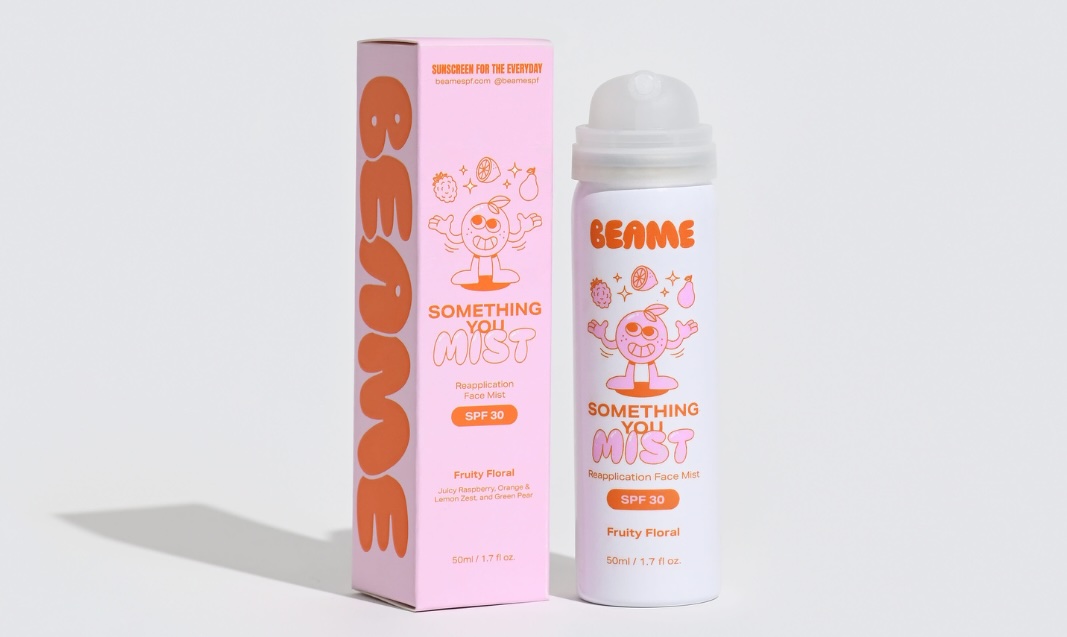Chill Out: Your Ultimate Guide to Cooling Sheets for Hot Sleepers
Have you ever found yourself caught in a nightly battle with overheating, endlessly tossing and turning in search of a cool spot? Many of us have experienced that frustrating struggle. While blasting the AC might seem like the only immediate relief, leading to a soaring electric bill, there’s a more sustainable and comfortable solution: dressing […] The post Chill Out: Your Ultimate Guide to Cooling Sheets for Hot Sleepers appeared first on Redfin | Real Estate Tips for Home Buying, Selling & More.


Have you ever found yourself caught in a nightly battle with overheating, endlessly tossing and turning in search of a cool spot? Many of us have experienced that frustrating struggle. While blasting the AC might seem like the only immediate relief, leading to a soaring electric bill, there’s a more sustainable and comfortable solution: dressing your bed with innovative cooling sheets for hot sleepers. These specially designed sheets can help you achieve quality shut-eye and stay comfortable all night long, whether you’re experiencing night sweats or hot flashes from menopause.
Whether you’re battling the sweltering Texas heat in your Austin home, seeking sanctuary from night sweats in your Dallas apartment, or simply aiming for a cooler night’s rest in Houston, this guide has everything you need to navigate the world of cooling sheets for hot sleepers and finally get the restorative sleep you deserve.
What makes sheets “cool”? Unpacking the science behind better sleep.
The effectiveness of a cooling sheet for hot sleepers in providing a “cooling” sensation is a direct result of specific fabric engineering and material science. Such sheets are constructed from materials that prioritize breathability and moisture management.
These properties facilitate enhanced air circulation and the efficient wicking away of moisture, which in turn prevents the accumulation of heat and discomfort. This strategic design is crucial for maintaining a comfortable sleep temperature.
The Coolest Threads: Cooling Sheets for Hot Sleepers
When searching for the best sheets for hot sleepers, the fabric choice is paramount. Different materials offer unique advantages in terms of breathability, feel, and durability. Understanding these differences will help you make an informed decision for your personal sleep preferences.
Let’s break down the top contenders:
Tencel Lyocell: Sustainable softness and superior moisture-wicking
Lyocell: Sustainable softness and superior moisture-wicking
Tencel Lyocell is a sustainable fabric derived from wood pulp. It’s highly regarded for its exceptional breathability and impressive moisture-wicking properties, which are crucial for hot sleepers.
Lyocell is a sustainable fabric derived from wood pulp. It’s highly regarded for its exceptional breathability and impressive moisture-wicking properties, which are crucial for hot sleepers.
As Dr. Mayur Cara D.C. with EaseWell Chiropractic Eastside shares, “For those who overheat at night, choose bedsheets made from Tencel (lyocell), a highly breathable and moisture-wicking material derived from eucalyptus.” Its smooth, lightweight weave promotes airflow and efficiently draws sweat away from the body, ensuring a cooler, more comfortable sleep. He also suggests, “Opt for a sateen weave for an extra touch of softness without sacrificing breathability.”
| Pros: It boasts a silky-smooth feel that’s gentle on the skin. Its production is generally more environmentally friendly compared to rayon or bamboo. Tencel helps to pull moisture away from your body, preventing that clammy feeling that can disrupt sleep | Cons: While often compared to silk for its feel, it might not offer the same crispness as percale cotton, if that’s your preference. It can also be a more premium-priced option. |

 Cooling Down Comforter
Cooling Down ComforterRecommendation: “When choosing summer bedding, it’s not just about the fabric — it’s about the engineering. Look for natural materials like TENCEL , but also pay attention to how the product manages airflow. Our Luxecool
, but also pay attention to how the product manages airflow. Our Luxecool Comforter combines eucalyptus-based TENCEL
Comforter combines eucalyptus-based TENCEL with Breathe-Zone
with Breathe-Zone Technology — built-in ventilation channels that allow heat and moisture to escape, helping the body maintain its natural sleep temperature of around 67°F for up to 8 hours. It’s a blend of nature and smart design that hot sleepers truly benefit from.” — Wendy Freeman, Bedding Product Specialist at Warmy & Tummy
Technology — built-in ventilation channels that allow heat and moisture to escape, helping the body maintain its natural sleep temperature of around 67°F for up to 8 hours. It’s a blend of nature and smart design that hot sleepers truly benefit from.” — Wendy Freeman, Bedding Product Specialist at Warmy & Tummy
Percale cotton: Breathable classic

Zakia Lott, wellness writer and founder of The Now Edit, shares her personal insights: “As a peri-menopausal woman, staying cool at night is more than a comfort — it’s a necessity. I recommend 100% natural fibers for hot sleepers, especially long-staple cotton in a crisp percale weave. It breathes beautifully, wicks away moisture, and brings a clean, elevated softness to the bedroom. Cotton is a timeless go-to for regulating temperature and supporting more restorative sleep.”
While cotton is a ubiquitous material for bedding, the weave makes all the difference for hot sleepers. Percale, in particular, is an excellent choice. It features a crisp, matte weave that feels cool and airy, reminiscent of a freshly laundered dress shirt. Steven Antoni, owner of Luxury Sleep Shop, offers further expert advice: “If you’re a hot sleeper, we recommend percale-woven cotton sheets. Their crisp finish and timeless one-over-one-under weave promote superior airflow and breathability, helping to regulate body temperature throughout the night. Naturally cool and lightweight, percale cotton is a must for those who sleep warmer.”

Recommendation: “If you find yourself overheating, sweating, or waking up at night, look at the bedsheets you’re using. Synthetic and processed fabrics, such as microfiber, polyester, rayon, and flannel, tend to trap heat and keep you insulated, so you’ll get warm easily. You’ll want to switch to a 100% cotton sheet in a percale weave – it will feel cool and breathable, and keep your body temperature regulated.
Cotton percale sheets are favored by 5-star hotels as well, because they are very comfortable for most people, no matter the season. These sheets are the best for hot sleepers year round, and will help you sleep soundly throughout the night.” – Steph MacDonald, Co-founder, Authenticity50
| Pros: Percale cotton is highly breathable, allowing for ample airflow. It’s known for its durability and gets softer with each wash. Opting for long-staple cotton varieties like Egyptian or Pima can enhance both softness and longevity. It’s generally more affordable than some other cooling fabrics. | Cons: It can wrinkle more easily than sateen or bamboo. Some might find its crispness less “luxurious” than silkier fabrics. |

Recommendation: “For hot sleepers, breathability and moisture control are everything. Our sheets are made from GOTS-certified organic cotton grown on regenerative farms — where healthy soils produce cleaner, more breathable fibers. Woven in a smooth sateen weave, the result is a lightweight fabric that draws heat and moisture away, helping you sleep cooler and deeper. That’s how we ensure our bedding is healthier for you — and the planet.” – Gregory Bailey
Founder of Antipodean Home
Linen: Durable, temperature-regulating, and naturally relaxed
Linen, crafted from the flax plant, is celebrated for its natural breathability, moisture-wicking capabilities, and remarkable durability. It offers a distinctly relaxed, slightly textured feel that mellows beautifully with every wash.
| Pros: Linen excels at regulating body temperature, keeping you refreshingly cool in warmer months and even providing a comforting warmth in cooler weather. Its inherent moisture-wicking ability keeps you dry. It’s an exceptionally durable fabric, meaning linen sheets can last for years. | Cons: Linen can be more expensive upfront than cotton. It naturally has a more rumpled, casual look, which might not appeal to everyone seeking a perfectly smooth bed. It can also feel a bit stiff initially, though it softens over time. |
Recommendation: “Kitelinens was born out of my own frustration with traditional sheets that wouldn’t stay in place, making bed-making a daily struggle. This inspired me to design a smarter sheet that simplifies the process. Beyond convenience, I focused on creating a fabric that is exceptionally breathable, moisture-wicking, and soft, ensuring that staying cool and comfortable throughout the night is just as effortless as making the bed in the morning.”-Sierra Wallizer, Founder and Ceo of Kitelinens
Bamboo: Smooth, soft, and superb at moisture management
Bamboo-derived fabrics, often labeled as rayon or viscose from bamboo, are prized for their softness, smoothness, and exceptional moisture-wicking and temperature-regulating properties. They tend to drape elegantly and feel cool to the touch, contributing to a truly comfortable sleep environment.
| Pros: Incredibly soft and smooth against the skin. Excellent at wicking away moisture and regulating temperature. Drapes beautifully, offering a luxurious feel. | Cons: The environmental impact of processing bamboo into fabric can vary depending on the specific method used. Like Tencel, it might be a higher price point than basic cotton. |
Sateen (proceed with caution): When luxury meets heat retention
While sateen cotton is admired for its silky feel and subtle sheen, its tighter weave can sometimes be a disadvantage for hot sleepers, potentially trapping more heat than the airier percale.
| Pros: Offers a luxurious, smooth feel and an attractive sheen. | Cons: Due to its tighter weave, sateen can be less breathable than percale and may retain more heat. If you favor the opulent feel of sateen, it’s advisable to choose a lower thread count (around 300-400) and confirm that it’s made from a breathable cotton to mitigate heat retention. |
Specialized cooling fabrics: Innovation for the ultimate chill
Beyond traditional natural fibers, some brands are innovating with proprietary blends and advanced technologies specifically engineered for cooling. These can include materials with phase-change properties that absorb and release heat, or highly advanced moisture-wicking fibers designed to optimize temperature regulation.
| Pros: Often offer cutting-edge cooling performance due to specialized design. Can provide a truly optimized sleep temperature. | Cons: Can be significantly more expensive. The specific feel and durability will vary widely by brand and technology. Researching reviews for specific products is especially important here. |
Beyond the sheets

Other innovative products can significantly enhance your quest for a cooler night’s sleep. For many homeowners, creating a calm and restful bedroom is just as important as designing a stylish living space. While blackout curtains and high-thread-count sheets are often part of the conversation, the cooling weighted blanket is a sleep essential gaining traction for its comfort and wellness benefits.
The Cooling Weighted Blanket from Mosaic, handcrafted in the U.S., blends luxurious materials with practical innovation. Its soft, breathable fabric draws heat and moisture away from the body, allowing air to circulate so you stay cool and dry all night long — even under a comforting layer of weight.

Joshua Hensel with BedJet shares his expert insight: “For really hot sleepers, even the most breathable sheets sometimes aren’t enough because excess body heat gets trapped between the mattress and sheets, causing humidity to build up in the bed, which is uncomfortable and disrupts sleep. BedJet actively circulates temperature-controlled air directly into your bedding or specialized Cloud Sheet, effectively removing trapped body heat and moisture.
The Cloud Sheet’s unique design gently diffuses the cooling air evenly across the entire bed. This combination creates a consistently cool and dry sleeping environment, promoting deeper, uninterrupted sleep all night.” This highlights how advanced climate control systems like the BedJet can actively regulate the temperature of your bed, delivering personalized cooling or warming directly to your sleep space. Such complementary items underscore that creating an optimal sleep climate often involves a multifaceted approach, extending beyond just your bedding.
Do cooling sheets actually deliver on their promise?
It’s a fair question: with all the claims, do any cooling sheets actually work? The consensus from countless hot sleepers and the science behind the fabrics, strongly suggests they do. The key is to choose the right material and weave that aligns with your body’s specific needs for temperature regulation.
The effectiveness stems from the inherent properties of the fibers and the way they are woven. Fabrics like Tencel, linen, and percale cotton are designed to facilitate airflow and manage moisture, which are the fundamental elements of staying cool. When these properties are optimized, the sheets create a microclimate around your body that prevents heat buildup and wicks away perspiration, leading to a noticeably cooler and more comfortable sleep experience. Many users report a significant difference in their ability to fall asleep and stay asleep without waking up drenched in sweat.
Sweet dreams await: Cooling sheets for hot sleepers
Finding the best sheets for hot sleepers is ultimately a personal endeavor. What works for one person might not be ideal for another, as factors like individual body temperature, climate, and personal texture preferences all play a role.
When making your selection, carefully consider your budget, the desired feel of the fabric against your skin, and your commitment to sustainability. Each material offers a unique balance of these attributes. By prioritizing breathable fabrics and thoughtful construction, you can effectively transform your bed into a cool, refreshing oasis, finally bidding farewell to those sweaty, restless nights. Investing in the right sheets isn’t just about bedding; it’s a direct investment in improved sleep quality and a more comfortable, well-rested you.
The post Chill Out: Your Ultimate Guide to Cooling Sheets for Hot Sleepers appeared first on Redfin | Real Estate Tips for Home Buying, Selling & More.
























































































































































